Sculcoates, East Riding of Yorkshire
Up to 1834
Cottingham had a poorhouse from 1729, erected on land at the north side of Hallgate, purchased for the parish by Richard Burton.
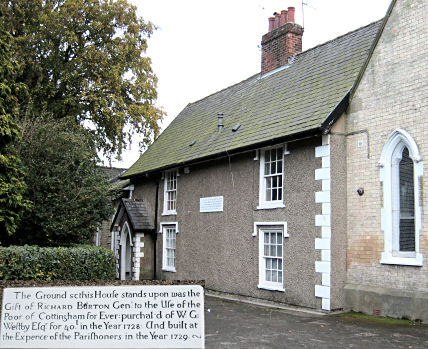
Cottingham poorhouse, 2009.
© Peter Higginbotham.
A parliamentary report of 1777 recorded parish or township workhouses operating at Drypoole (for up to 4 inmates), and Sutton and Stoneferry (16 inmates). Drypool's workhouse was on Great Union Street at the east side of the River Hull. The Sutton workhouse, dating from 1757, was on Church Street.
Hedon had a poorhouse by 1800, next to a blacksmith's on George Street, near the entrance to King's Place. Preston, four miles north of Hedon, had a workhouse on Main Street by 1775. In 1829, Thomas Moody was its governor.
Marfleet's "Poorhouse Lane" (now the access road to the Hull Kingston Rovers rugby ground) presumably indicates the former presence of a poorhouse in the vicinity.
In 1823, the Sculcoates parish workhouse was situated in Wilson's Row, Carr Street, Wincolmlee. It was under the direction of a Visitor and four Guardians.
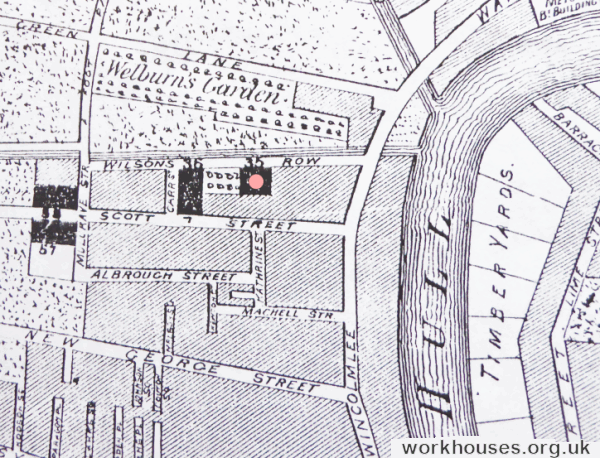
Sculcoates poorhouse location, 1818.
After 1834
Sculcoates Poor Law Union was formed on the 6th July 1837. Its operation was overseen by an elected Board of Guardians, 27 in number, representing its 18 constituent parishes as listed below (figures in brackets indicate numbers of Guardians if more than one):
East Riding: Anlaby, Cottingham (2), Drypool (2), Kirk Ella, West Ella, North Ferriby, Hedon (2), Hessle, Marfleet, Melton, Preston, Sculcoates (4), Southcoates (2), Sutton and Stoneferry (2), Swanland, Waulby [Wauldby], Welton, Willerby (2).
The population falling within the Union at the 1831 census had been 29,238 with parishes ranging in size from Waulby (population 50) to Sculcoates itself (13,468). The average annual poor-rate expenditure for the period 1834-6 had been £11,407 or 8s.10d. per head of the population.
The Union Workhouse
A union workhouse was built in 1843-5 to designs by Henry F Lockwood who, with his partner William Mawson, was also the architect of the nearby Hull workhouse. Sculcoates workhouse was built at a site on the east side of the Beverley Road and could accommodate 500 inmates.
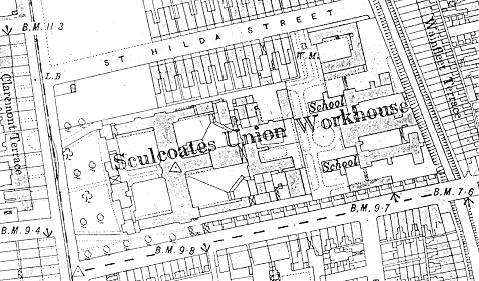
Sculcoates workhouse site, 1893.
The original building comprised a front range, a main block, and small infirmary. An 1844 account in the Hull Advertiser described it as follows:
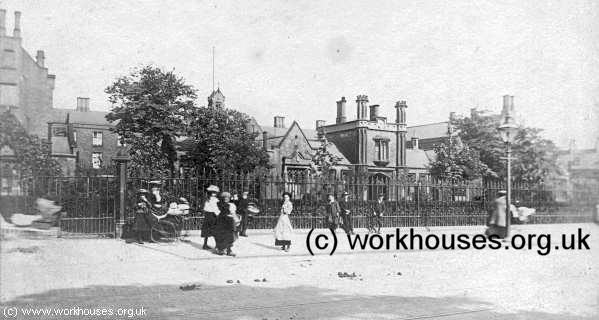
Sculcoates workhouse from the north-west, c.1900.
© Peter Higginbotham.
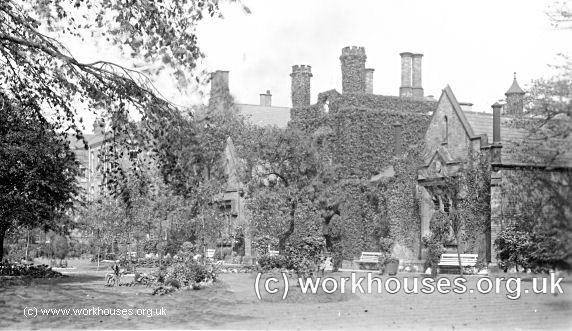
Sculcoates entrance block from the south-west, c.1913.
© Peter Higginbotham.
The front range was a single storey block with a central gated entrance archway.
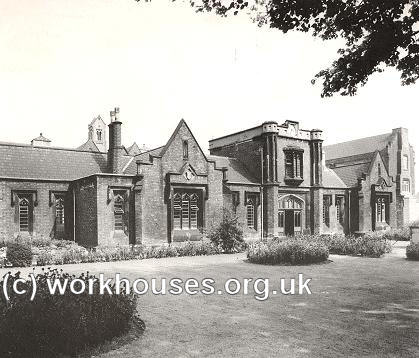
Sculcoates entrance range from the north-west.
courtesy of Local History Unit, Hull College.
The H-shaped main block was three storeys high and, as reported by the Hull Advertiser, had the Master and Matron's quarters at the centre, with male and female wings to each side.
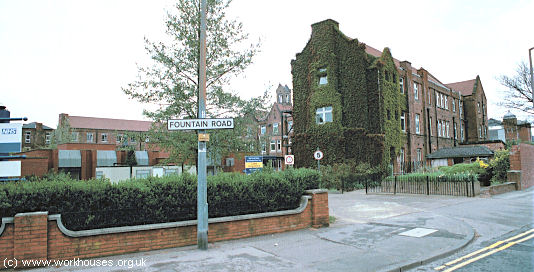
Sculcoates general view from the south-west, 2001.
© Peter Higginbotham.
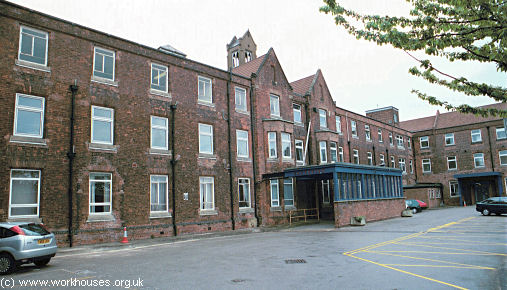
Sculcoates main block from the north-west, 2001.
© Peter Higginbotham.
At the centre rear of the main block were the 300-seat dining-hall and the kitchens.
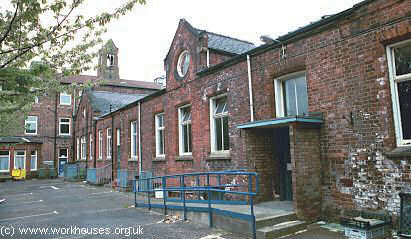
Sculcoates dining-hall from the south-east, 2001.
© Peter Higginbotham.
The original infirmary was a U-shaped block, immediately to the rear of the main workhouse.
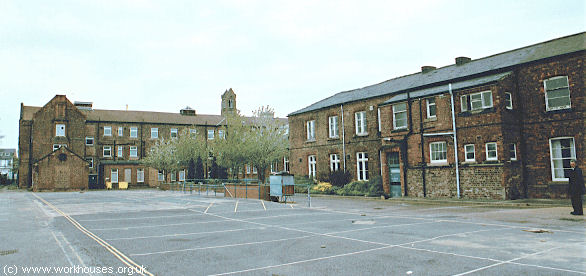
Sculcoates rear of main block and original infirmary block from the south-east, 2001.
© Peter Higginbotham.
Children's school buildings and officers' accommodation were added to the east of the infirmary in 1883 but were converted to infirmary blocks in 1896.
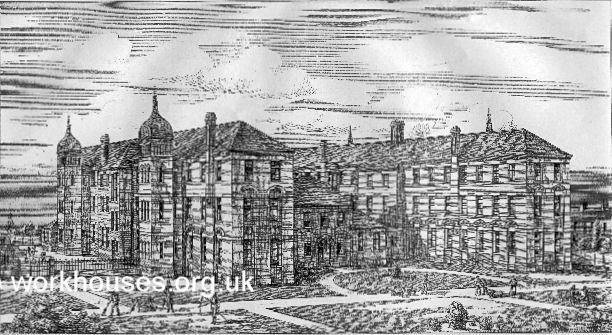
Sculcoates children's buildings from the north-west, c.1883.
As part of the conversion to infirmary use, additional sanitary towers were added at the ends of the former children's blocks.
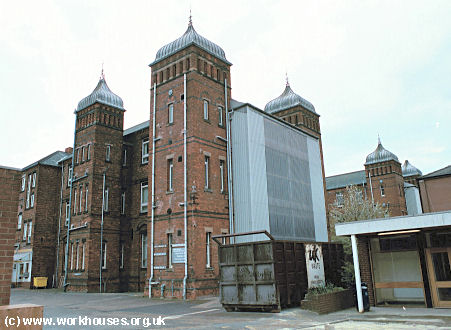
Sculcoates infirmary blocks from the north-west, 2001.
© Peter Higginbotham.
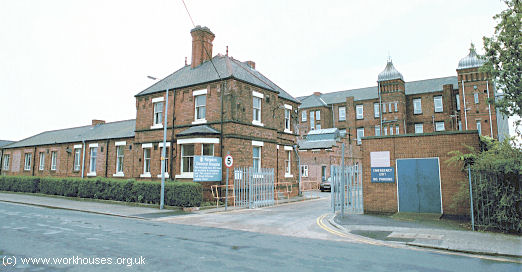
Sculcoates St Hilda Street entrance and school/infirmary block from the north, 2001.
© Peter Higginbotham.
In 1915, it was reported that the master, Mr W R Stedman, and ten other of the workhouse's officials had presented the Guardians with a petition asking permission to enlist, with their positions being kept open for them. They included the master's assistant, workhouse tailor, barber, baker, shoemaker, clerk and labour master. Two others requested leave to engage in munitions work.
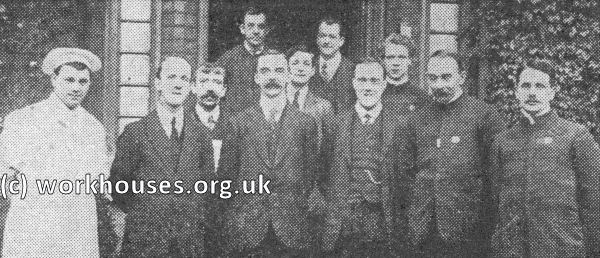
Patriotic Sculcoates workhouse officers, 1915.
© Peter Higginbotham.
The workhouse later became the Beverley Road Institution and, after 1948, Kingston General Hospital. The front range was demolished in the 1970s to make way for the Kingston General day-hospital. The remaining workhouse buildings were demolished in 2002 and a school erected on the site.
The Hessle Cottage Homes
In 1897, the Sculcoates Guardians erected a cottage homes development at Hessle. The homes provided accommodation for around a hundred pauper children away from the main workhouse. The children lived in "family" groups of fifteen to twenty per home, each under the supervision of a house-mother.
The homes were located at the north side of the Hull Road in Sculcoates. Their location and layout are shown on the 1910 map below.
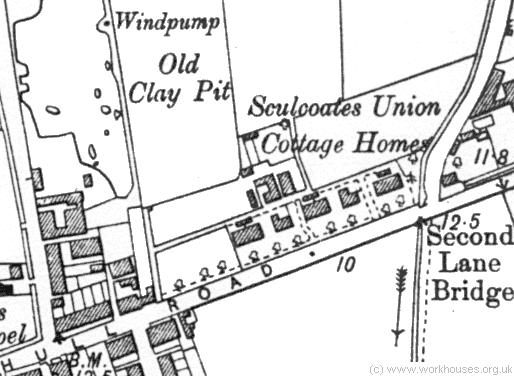
Sculcoates cottage homes map, 1893.
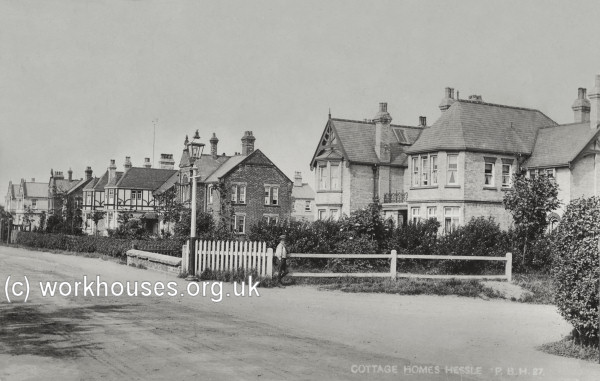
Sculcoates cottage homes, c.1905.
© Peter Higginbotham.
The main row of homes comprised two styles of house — three pairs of semi-detached house constructed in yellow brick, alternating with two smaller detached red-brick houses.
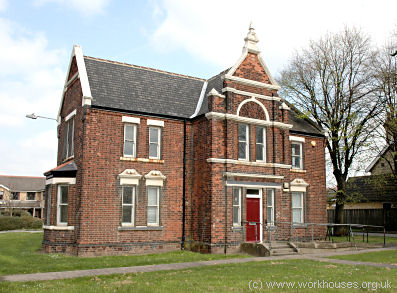
Sculcoates cottage homes, 2005.
© Peter Higginbotham.
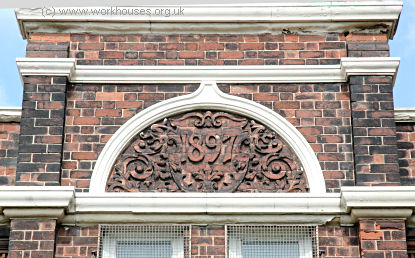
Sculcoates cottage homes, 2005.
© Peter Higginbotham.
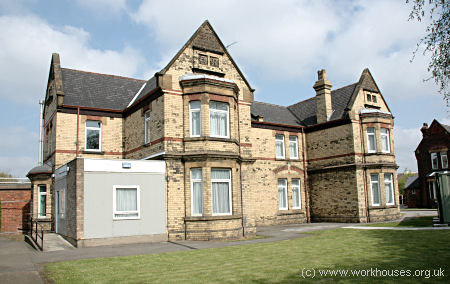
Sculcoates cottage homes, 2005.
© Peter Higginbotham.
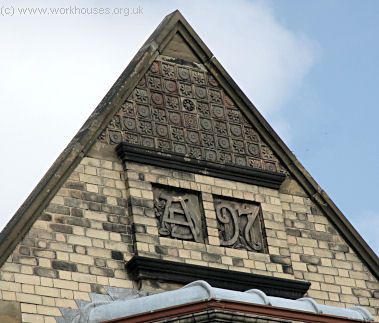
Sculcoates cottage homes, 2005.
© Peter Higginbotham.
Two further buildings set back from the road may have contained administrative, receiving, infirmary or school accommodation.
The main row of homes still survives and the buildings now serve a variety of uses.
Staff
Inmates
Records
Note: many repositories impose a closure period of up to 100 years for records identifying individuals. Before travelling a long distance, always check that the records you want to consult will be available.
- Hull City Archives, Hull History Centre, Worship Street, Hull HU2 8BG. Holdings include: Various minutes (1837-1930); Ledgers etc. (1840-1928); Cottage Homes (1898); etc.
Bibliography
- Baines, E. (1823) History, Directory & Gazetteer, of the County of York;
Links
- None.
Unless otherwise indicated, this page () is copyright Peter Higginbotham. Contents may not be reproduced without permission.


